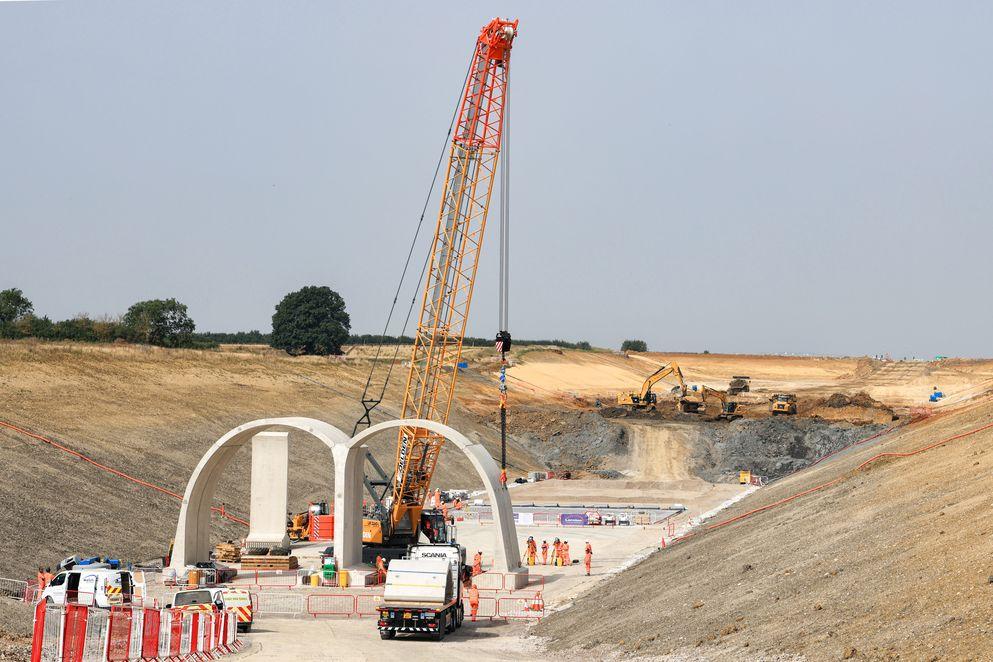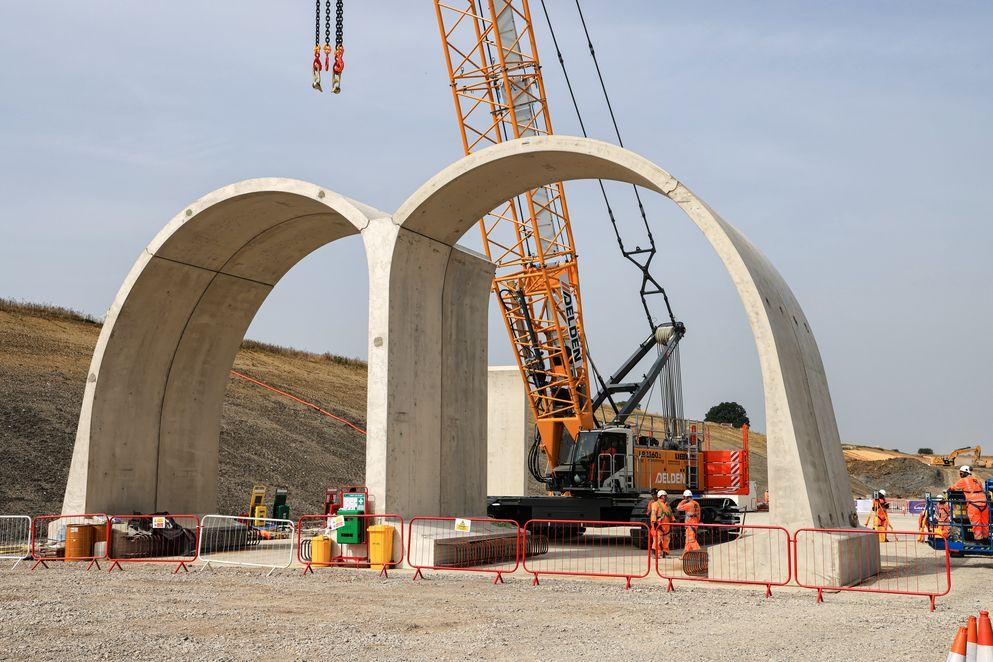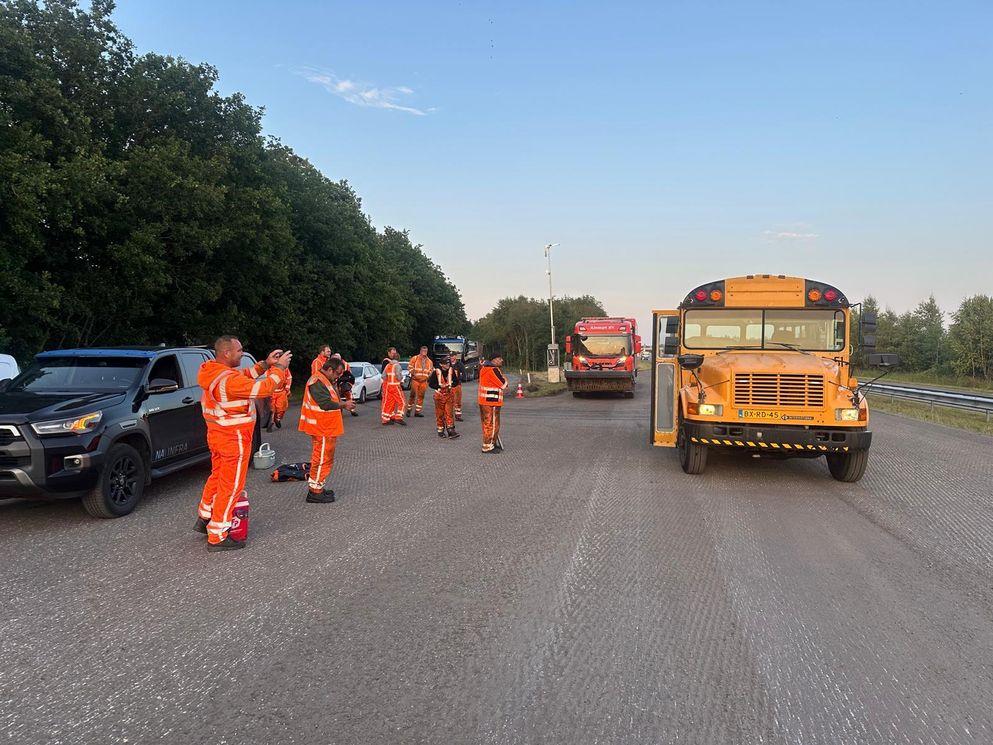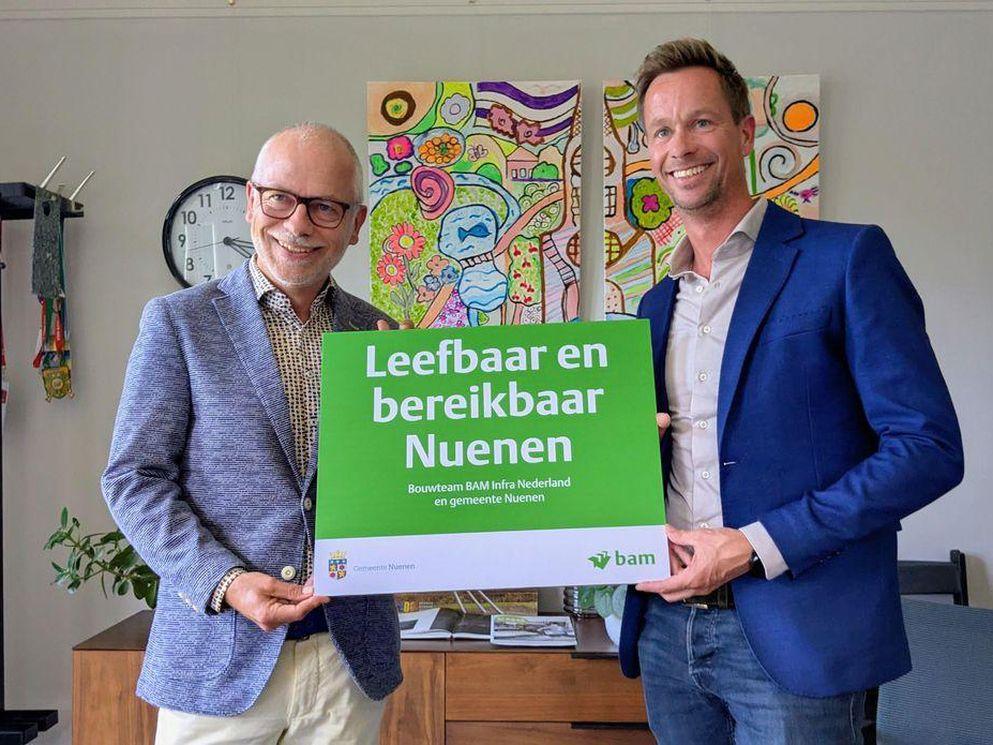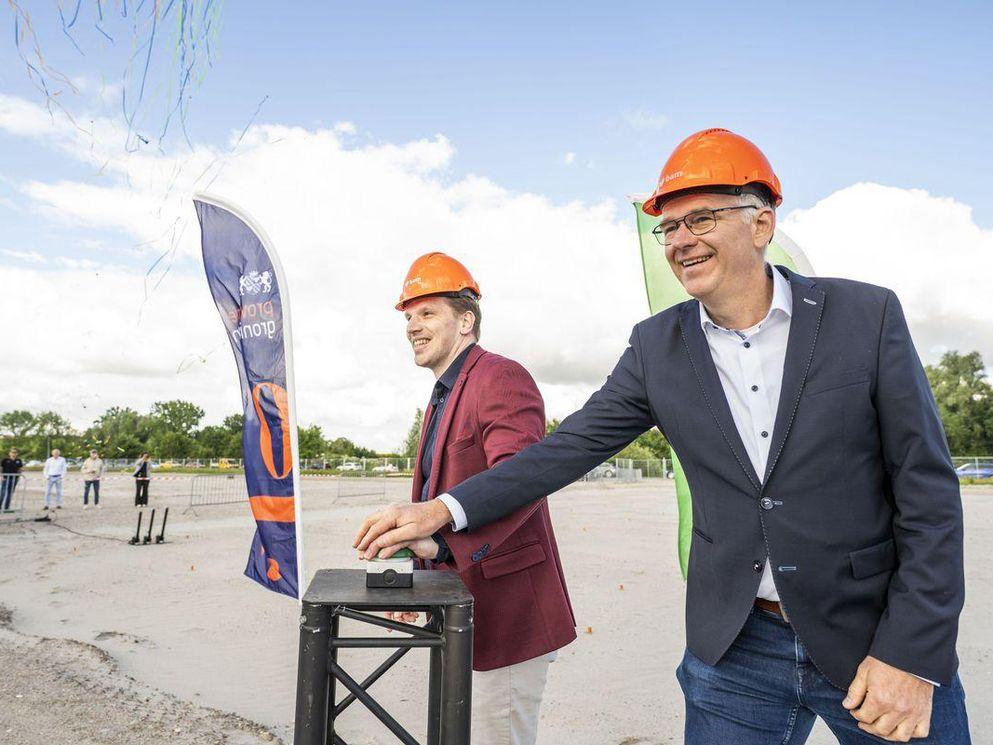Work begins in West Northants on HS2’s longest ‘green tunnel’
The 2.7km Greatworth ‘green tunnel’ will be built on the surface before being covered by earth, trees and shrubs to fit in with the Northamptonshire countryside
(News release HS2:) 13 September 2023 - HS2 has begun assembling the project’s longest ‘green tunnel’ - designed to blend the high speed railway into the rural landscape and reduce disruption for communities around Greatworth in West Northamptonshire.
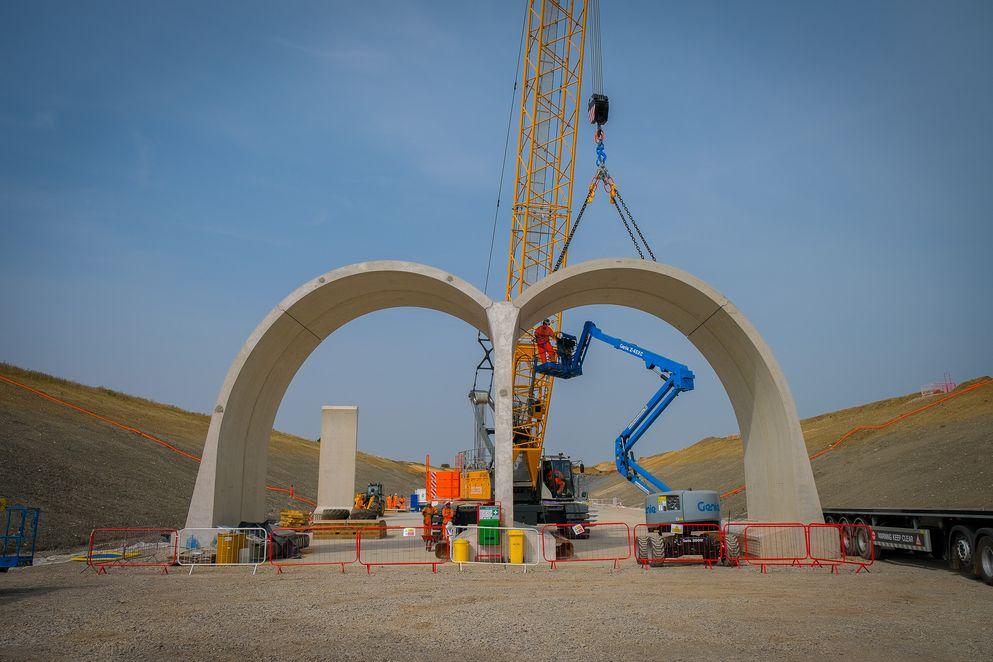
Engineers at work on the first arch for the Greatworth green tunnel - September 2023
Unlike a bored tunnel, the shallow one-and-a-half mile (2.7km) tunnel is being built using a ‘cut and cover’ process. This involves excavating a cutting, building the tunnel and then burying it, with trees, shrubs and hedgerows planted on top to blend in with the surrounding countryside.
The tunnel structure will be made from more than five thousand giant concrete segments, made at a specialist pre-cast factory in Derbyshire, and assembled on site by HS2’s main works contractor, EKFB - a team made up of Eiffage, Kier, Ferrovial Construction and BAM Nuttall.
Applying lessons from the construction of the latest French high-speed lines, EKFB opted for this modular approach - instead of a traditional process of pouring the concrete on site - to boost efficiency and cut the amount of embedded carbon in the structure.
Greatworth is one of five ‘green tunnels’ that are being built on phase one of the HS2 project, which is designed to improve links between London, Birmingham and the north, boost the economy and free up more space on the existing rail network for freight and local services.
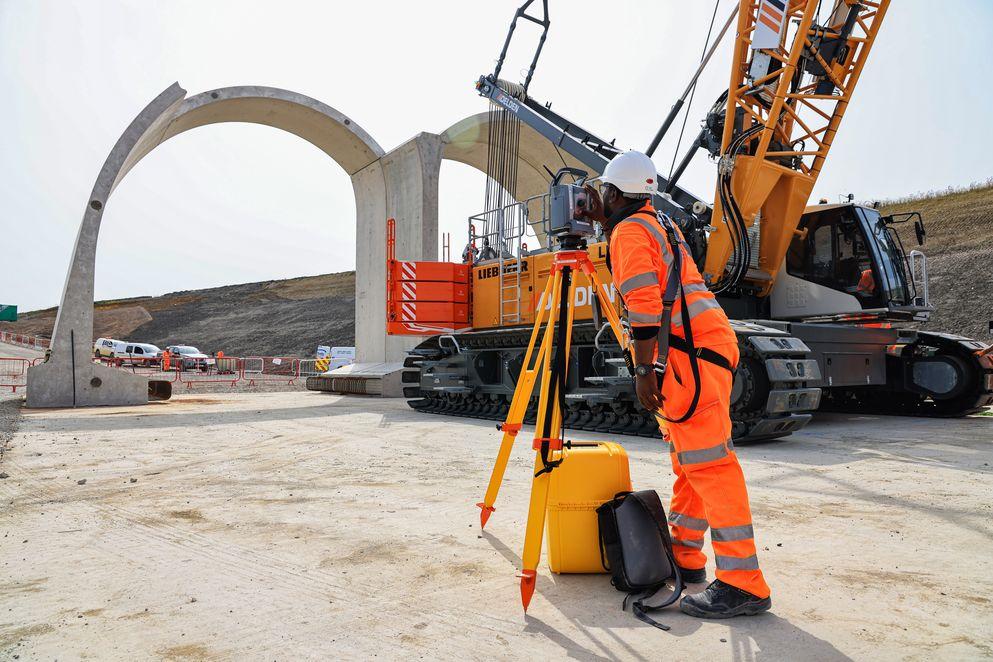
Surveyor at work on the Greatworth green tunnel - September 2023
HS2 Ltd’s Project Client Neil Winterburn, said: ‘Greatworth is one of five green tunnels between London and Birmingham designed to protect the natural environment and reduce disruption for local communities - and it’s great to see the first arches in position. Our trains will be powered by zero carbon electricity but it’s also important to reduce the amount of carbon embedded in construction. The off-site manufacturing techniques being used will help cutting the overall amount of carbon-intensive concrete and steel in the tunnel and help spread the supply chain benefits of the project across the UK.’
Designed as an m-shaped double arch, the tunnel will have separate halves for southbound and northbound trains. Five different concrete precast segments will be slotted together to achieve the double arch which is the height of two double-decker buses - one central pier, two side walls and two roof slabs.
The tunnel segments are being made by Stanton Precast in Ilkeston, Derbyshire, as part of a contract which could create up to 100 local jobs. All 5,410 segments will be steel reinforced, with the largest weighing up to 43 tonnes.
Concrete and steel are some of the biggest sources of carbon emissions within the construction industry and by reducing the amount of both materials needed for the tunnel, this lighter-weight modular approach is expected to more than halve the amount of carbon embedded in the structure. It also requires less people and equipment on site, improving safety and reducing disruption for residents.
EKFB’s Programme Director Emmanuel Rossignol, said: ‘To see the construction start on HS2’s second cut and cover tunnel in Northamptonshire is a proud milestone for the team. The design and construction approach of this tunnel is unique to the UK, and there are many benefits associated with this methodology, including a reduction in our carbon footprint, but it’s not been without its challenges along the way. Our expert teams are to thank for their dedication as we continue to advance the construction programme across the Chipping Warden and Greatworth green tunnels.’
The tunnel will be built in sections, with construction of the main structure expected to take around two years. Local roads such as the B4525, Sulgrave Road, Helmsdon Road and access for Greatworth Park will be realigned to cross the tunnel, as well as local footpaths.
Tailored landscaping design plans are also being developed, with thousands of native trees and shrubs typical to the local area - such as Silver Birch, Oak, Beech and Willow - planted to create new woodland areas around the portals and recreate the hedgerows and field boundaries on top of the tunnel.
Lessons learned during the construction of a similar green tunnel at Chipping Warden are being applied to the delivery of Greatworth. These include changes to quality control and the delivery and installation of the segments.
Shorter green tunnels are also being built at Wendover in Buckinghamshire, Burton Green in Warwickshire and in the London Borough of Hillingdon. All the tunnels will have specially designed ‘porous portals’ at either end to reduce the noise of trains entering and exiting the tunnel, along with small portal buildings to house safety and electrical equipment.
Click here for the original news release.

